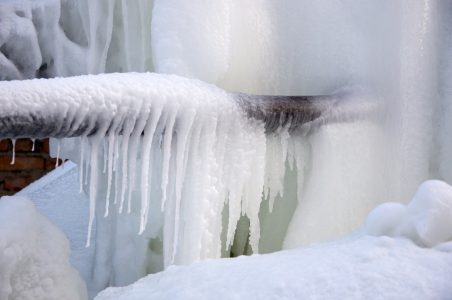Ways to Maintain Your Pipes from Cold Weather Damage: Essential Advice
Ways to Maintain Your Pipes from Cold Weather Damage: Essential Advice
Blog Article
Just how do you actually feel about How To Avoid Freezing Pipes?

Winter can wreak havoc on your pipes, particularly by freezing pipes. Below's exactly how to prevent it from happening and what to do if it does.
Intro
As temperatures decrease, the danger of frozen pipelines boosts, possibly causing pricey repair services and water damage. Recognizing exactly how to prevent frozen pipes is essential for homeowners in cool climates.
Comprehending Frozen Pipelines
What creates pipes to ice up?
Pipes ice up when subjected to temperatures listed below 32 ° F (0 ° C) for expanded periods. As water inside the pipes ices up, it broadens, taxing the pipe wall surfaces and possibly creating them to burst.
Threats and damages
Frozen pipes can lead to supply of water disruptions, building damage, and expensive repair services. Ruptured pipes can flood homes and create considerable structural damage.
Indications of Frozen Pipes
Determining icy pipelines early can avoid them from bursting.
How to recognize frozen pipelines
Seek reduced water flow from taps, unusual odors or sounds from pipes, and noticeable frost on exposed pipes.
Avoidance Tips
Shielding prone pipelines
Wrap pipes in insulation sleeves or utilize heat tape to shield them from freezing temperatures. Focus on pipes in unheated or outside areas of the home.
Heating strategies
Maintain interior rooms adequately warmed, specifically areas with pipes. Open closet doors to allow warm air to flow around pipelines under sinks.
Safeguarding Exterior Plumbing
Garden tubes and exterior taps
Disconnect and drain pipes yard hoses prior to winter. Install frost-proof faucets or cover exterior faucets with insulated caps.
What to Do If Your Pipelines Freeze
Immediate activities to take
If you presume frozen pipes, keep taps open to eliminate stress as the ice melts. Use a hairdryer or towels taken in hot water to thaw pipelines gradually.
Long-Term Solutions
Architectural changes
Think about rerouting pipelines far from outside walls or unheated locations. Add additional insulation to attic rooms, cellars, and crawl spaces.
Updating insulation
Invest in premium insulation for pipes, attic rooms, and wall surfaces. Appropriate insulation helps preserve constant temperature levels and lowers the danger of frozen pipes.
Final thought
Avoiding icy pipes calls for proactive procedures and fast reactions. By recognizing the causes, indicators, and safety nets, property owners can secure their pipes throughout winter.
5 Ways to Prevent Frozen Pipes
Drain Outdoor Faucets and Disconnect Hoses
First, close the shut-off valve that controls the flow of water in the pipe to your outdoor faucet. Then, head outside to disconnect and drain your hose and open the outdoor faucet to allow the water to completely drain out of the line. Turn off the faucet when done. Finally, head back to the shut-off valve and drain the remaining water inside the pipe into a bucket or container. Additionally, if you have a home irrigation system, you should consider hiring an expert to clear the system of water each year.
Insulate Pipes
One of the best and most cost-effective methods for preventing frozen water pipes is to wrap your pipes with insulation. This is especially important for areas in your home that aren’t exposed to heat, such as an attic. We suggest using foam sleeves, which can typically be found at your local hardware store.
Keep Heat Running at 65
Your pipes are located inside your walls, and the temperature there is much colder than the rest of the house. To prevent your pipes from freezing, The Insurance Information Institute suggests that you keep your home heated to at least 65 degrees, even when traveling. You may want to invest in smart devices that can keep an eye on the temperature in your home while you’re away.
Leave Water Dripping
Moving water — even a small trickle — can prevent ice from forming inside your pipes. When freezing temps are imminent, start a drip of water from all faucets that serve exposed pipes. Leaving a few faucets running will also help relieve pressure inside the pipes and help prevent a rupture if the water inside freezes.
Open Cupboard Doors
Warm your kitchen and bathroom pipes by opening cupboards and vanities. You should also leave your interior doors ajar to help warm air circulate evenly throughout your home.
:strip_icc()/snow-outdoor-faucet-pipes-4af65d1e5e904fb1aa7bf74071fe5d89.jpg)
We were shown that write-up on How To Avoid Freezing Pipes through a pal on a different web blog. Kindly pause to distribute this entry if you liked it. Thank you so much for going through it.
Call Today Report this page